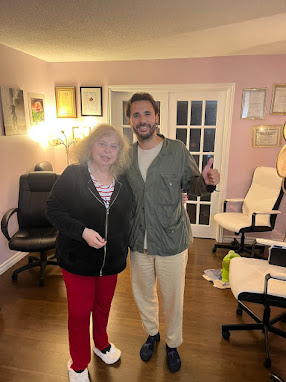Vocal Science: Assessing Your “Instrument” and You as a “Player”… So To Speak.
Let’s find out what you’ve got!
What I mean by the “instrument” is the height and weight of the person, his/her outer and inner “opening” of the vocal anatomy as well as the pitch and tonality of their voice; not to mention many other components, which will also come into play (in a manner of speaking).
Quite often, I have been asked if it is possible to increase the capacity of one’s “instrument”.
I can compare it with extending an average sized keyboard to a much bigger upright piano, so that it would be possible to recite on it, let’s say, a Concerto by Tchaikovsky (or something like this of that caliber).
My answer is that it is possible to a degree.
Over the years, I had singing students coming to me, possessing a very small mouth, short height and small body frame overall.
Due to my very specially designed speech and singing exercises, I was definitely able to stretch their mouth opening quite a bit and develop their facial muscles quite noticeably as well. I was also able to build their abdominal muscles, upper diaphragm muscles and upper back muscles, which, in turn, made them look and feel stronger, taller and bigger-framed. Naturally, their voices concurrently were getting stronger, louder and much more fully bodied.
So, especially with children, it is even more so apparent.
One of the parents of a beautiful (and very smart and sound) little girl keeps asking me if she possess any talent for singing. She is a little petit 11 year old; and respectively, her voice is not as strong to show any talent just yet.
However, with my skills and abilities, for only 3 hours of lessons as of now, I was able to increase her volume and implement more “body” into her voice.
Her, let’s say, “3 octave keyboard” just gained at least half an octave extra.
The objective is to bring her voice out and to its maximum capacity.
That will require quite a few more hours of very detailed and (needless to say) intense work; and a lot of it through the speech exercises, following special singing exercises which are designed to identify all possible combinations of sounds, duration and pitch, and also will identify all possible situations where those intervals may and will exist in the future songs.
But right now, mostly, we are building the “instrument” while, concurrently, teaching the “player” how to extract the maximum capacity from that “instrument”, but (at the same time) with no pain or strain on the vocal anatomy.
We always suggest to “work smart, not hard”.
And we are teaching our students to reach the maximum result with minimum physical effort, but rather employing the intellectual understanding, sound motor skills and kinesthetic feel which will, no doubt, lead them to their very successful future vocal performance.



